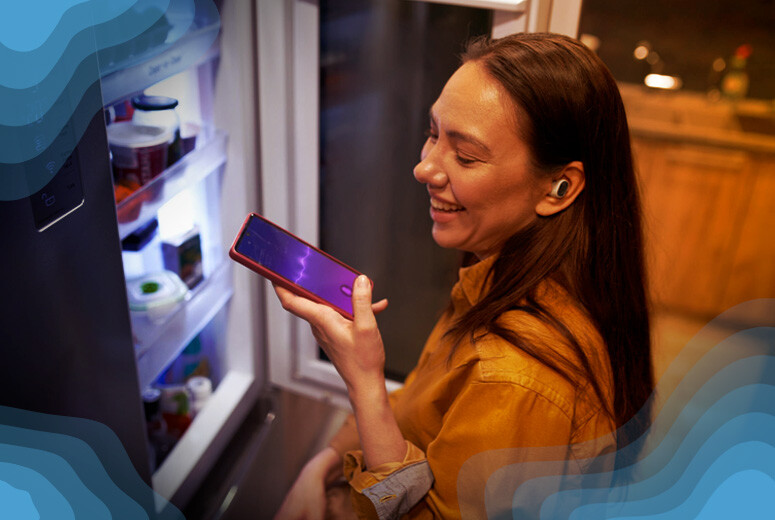The opening scene of Mission Impossible 2 featured Tom Cruise climbing a sheer mountain face, only to receive a mission embedded in a pair of sunglasses that activated after a retinal scan confirmed his identity.
Biometric identification is no longer the stuff of sci-fi films—it’s a reality. After 9/11, significant investments were made in biometric identification technology. On the commercial front, Apple introduced Touch ID in 2013, a fingerprint recognition feature that quickly became a staple of modern smartphones¹. Today, tech companies are pushing boundaries with facial and voice recognition solutions.
What Is Voice Biometrics?
Voice biometrics is the identification of a person based on voice characteristics². It differs from speech recognition—voice biometrics determines who is speaking, while speech recognition focuses on what is being said.
A person’s voice has over 150 unique attributes, including larynx shape, mouth structure, speaking speed, accent, and pronunciation, making it a reliable means of authentication.
Customer Experience and Voice Biometrics
Rising customer expectations are driving the adoption of high-tech solutions in customer service. In the past, customers bore the burden of security, forced to remember additional PINs, passwords, or endure lengthy IVR authentication processes. Frustrated customers often switched to competitors rather than struggle through inefficient interactions.
Recent advancements in noise-canceling microphones, voice-activated virtual assistants, and AI-driven biometric authentication have set the stage for widespread adoption of voice biometrics.
Case Study: UK Bank’s Transformation
A UK bank experienced high customer churn due to a slow and inefficient authentication process. The average time to verify a customer using PINs and agent verification was 74 seconds. After implementing an IVR system with voice biometrics, the bank:
-
Saved over $5 million annually in IVR infrastructure costs.
-
Increased customer satisfaction (CSAT) scores by 74%.
-
Reduced authentication time from 74 seconds to 9 seconds³.
Additionally, companies that implement voice biometrics see a 50% improvement in Net Promoter Score (NPS).
How Voice Biometrics Works
Once a customer enrolls in a voice authentication system, future calls can be authenticated within milliseconds.
Advantages of Voice Biometrics Over Other Authentication Methods
-
Low Cost – No additional hardware is required—only a microphone or phone.
-
Ease of Use – Speaking is natural, making user adoption seamless.
-
Remote Authentication – Customers don’t need to be physically present for verification.
-
Quick Enrollment – A 2–8 second voice sample is enough to create a voiceprint.
-
Fast Authentication – Verification typically takes less than 0.5 seconds.
-
Minimal Storage Needs – Voiceprint data is small and easy to store.
The Future of Voice Biometrics
The future of customer service is AI-driven voice authentication. Soon, customers will simply call a business, speak naturally, and AI-powered systems will authenticate their identity, process their request, or connect them to the appropriate representative.
This is already happening—Vodafone has integrated voice biometrics into its customer service operations⁴. Citi has deployed voice authentication across Asia, allowing customers to be verified within 15 seconds, reducing verification time by 66%⁵.
Beyond Contact Centers: The Expanding Role of Voice Biometrics
In an era where omnichannel interactions and contextual conversations define customer relationships, voice biometrics is expanding beyond call centers. Advanced applications include:
-
Emotional Analysis – AI can detect a caller’s emotional state and adjust responses accordingly.
-
Intelligent Conversations – AI-driven assistants mimic human interactions, making support feel natural.
-
E-commerce & Virtual Assistants – Voice biometrics will enhance in-app verifications and purchases via Alexa, Siri, and other voice assistants.
-
IoT & Wearables – With limited screen space on smartwatches and IoT devices, voice authentication is emerging as a convenient security alternative.
Overcoming Challenges in Voice Biometrics
Voice authentication isn’t without challenges—factors like illness, aging, and background noise can impact accuracy. However, current error rates range between 2–5%, and continuous advancements are addressing these limitations.
Final Thoughts
Voice biometrics is revolutionizing customer experience, security, and authentication processes. With its speed, convenience, and security advantages, businesses across industries—from finance to telecom—are rapidly embracing this technology. As AI and machine learning refine these systems, voice biometrics will become the gold standard for secure, frictionless customer interactions.
References
[1] https://en.wikipedia.org/wiki/Touch_ID
[2] https://en.wikipedia.org/wiki/Speaker_recognition
[3] https://www.cognizant.com/whitepapers/the-2020-customer-experience-codex2426.pdf
[4] https://blog.vodafone.co.uk/2017/07/19/digital-customer-experience/






